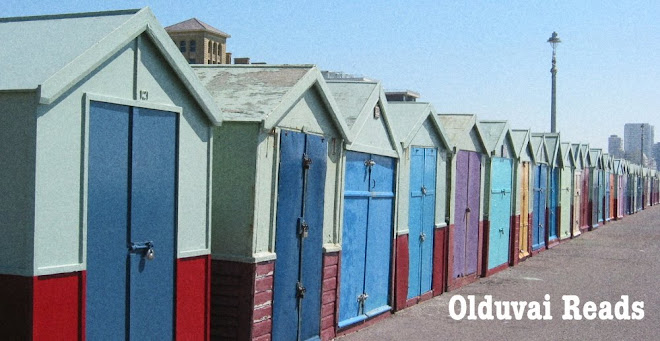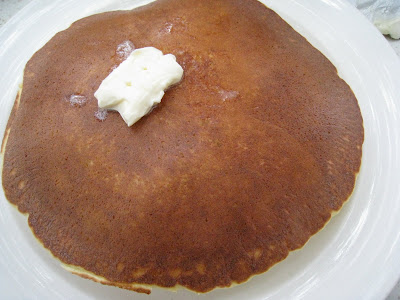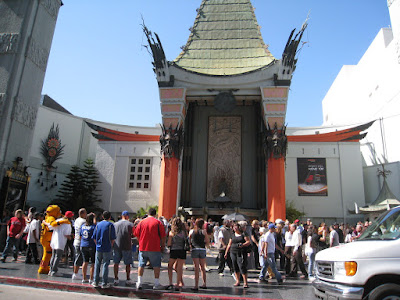 Library Loot is a weekly event co-hosted by Eva and Alessandra that encourages bloggers to share the books they’ve checked out from the library.
Library Loot is a weekly event co-hosted by Eva and Alessandra that encourages bloggers to share the books they’ve checked out from the library.Here's what I picked up last week at the library.
The Duchess of Bloomsbury Street - Helene Hanff (
my mini review)
Friendly Fire - A.B. Yehoshua
A couple, long married, are spending an unaccustomed week apart. Amotz, an engineer, is busy juggling the day-to-day needs of his elderly father, his children, and his grandchildren. His wife, Daniella, flies from Tel Aviv to East Africa to mourn the death of her older sister. There she confronts her anguished seventy-year-old brother-in-law, Yirmiyahu, whose soldier son was killed six years earlier in the West Bank by “friendly fire." Yirmiyahu is now managing a team of African researchers digging for the bones of mans primate ancestors as he desperately strives to detach himself from every shred of his identity, Jewish and Israeli. With great artistry, A. B. Yehoshua has once again written a rich, compassionate, rewarding novel in which sharply rendered details of modern Israeli life and age-old mysteries of human existence echo one another in complex and surprising ways.
The Widow Clicquot: The Story of a Champagne Empire and the Woman Who Ruled It - Tilar J. Mazzeo
The story of the visionary young widow who built a champagne empire, showed the world how to live with style, and emerged a legend. Veuve Clicquot champagne epitomizes glamour, style, and luxury. But who was this young widow — the Veuve Clicquot — whose champagne sparkled at the courts of France, Britain, and Russia, and how did she rise to celebrity and fortune?
In The Widow Clicquot, Tilar J. Mazzeo brings to life — for the first time — the fascinating woman behind the iconic yellow label: Barbe-Nicole Clicquot Ponsardin.A young witness to the dramatic events of the French Revolution and a new widow during the chaotic years of the Napoleonic Wars, Barbe-Nicole defied convention by assuming — after her husband's death — the reins of the fledgling wine business they had nurtured. Steering the company through dizzying political and financial reversals, she became one of the world's first great businesswomen and one of the richest women of her time.
Although the Widow Clicquot is still a legend in her native France, her story has never been told in all its richness — until now. Painstakingly researched and elegantly written, The Widow Clicquot provides a glimpse into the life of a woman who arranged clandestine and perilous champagne deliveries to Russia one day and entertained Napoléon and Joséphine Bonaparte on another. She was a daring and determined entrepreneur, a bold risk taker, and an audacious and intelligent woman who took control of her own destiny when fate left her on the brink of financial ruin. Her legacy lives on today, not simply through the famous product that still bears her name, but now through Mazzeo's finely crafted book. As much a fascinating journey through the process of making this temperamental wine as a biography of a uniquely tempered woman, The Widow Clicquot is utterly intoxicating.
David Golder, the Ball, Snow in Autumn, The Courilof Affair - Irene Nemirovsky
After reading Suite Française, I knew I had to read more by Nemirovsky. Definitely looking forward to this one!
Readers everywhere were introduced to the work of Irène Némirovsky through the publication of her long-lost masterpiece, Suite Française. But Suite Française was only the coda to the brief yet remarkably prolific career of this nearly forgotten, magnificent novelist. Here in one volume are four of Némirovsky's other novels — all of them newly translated by the award-winning Sandra Smith, and all, except David Golder, available in English for the first time. David Golder is the novel that established Néirovsky's reputation in France in 1929 when she was twenty-six. It is a novel about greed and loneliness, the story of a self-made business man, once wealthy, now suffering a breakdown as he nears the lonely end of his life. The Courilof Affair tells the story of a Russian revolutionary living out his last days — and his recollections of his first infamous assassination. Also included are two short, gemlike novels: The Ball, a pointed exploration of adolescence and the obsession with status among the bourgeoisie, and Snow in Autumn, an evocative tale of White Russian émigrés in Paris after the Russian Revolution.
Introduced by celebrated novelist Claire Messud, this collection of four spellbinding novels offers the same storytelling mastery, powerful clarity of language, and empathic grasp of human behavior that would give shape to Suite Française.
Alone in the Kitchen with an Eggplant - Jenni Ferrari-Adler (ed)
A delightful and unexpected collection of pieces by writers, foodies, and others — including Nora Ephron, Marcella Hazan, and Ann Patchett — on the distinctive experiences of cooking for one and dining alone. If, sooner or later, we all face the prospect of eating alone, then Alone in the Kitchen with an Eggplant provides the perfect set of instructions. In this unique collection, twenty-six writers and foodies invite readers into their kitchens to reflect on the secret meals they make for themselves when no one else is looking: the indulgent truffled egg sandwich, the comforting bowl of black beans, the bracing anchovy fillet on buttered toast.
From Italy to New York to Cape Cod to Thailand, from M. F. K. Fisher to Steve Almond to Nora Ephron, the experiences collected in this book are as diverse, moving, hilarious, and uplifting as the meals they describe. Haruki Murakami finds solace in spaghetti. Ephron mends a broken heart with mashed potatoes in bed. Ann Patchett trades the gourmet food she cooks for others for endless snacks involving saltines. Marcella Hazan, responsible for bringing sophisticated Italian cuisine into American homes, craves a simple grilled ham-and-cheese sandwich. Courtney Eldridge, divorced from a fancy chef, reconnects with the salsa she learned to cook from her cash-strapped mother. Rosa Jurjevics reflects on the influence of her mother, Laurie Colwin, as she stocks her home with salty treats. Almost all of the essays include recipes, making this book the perfect companion for a happy, lonely — or just hungry — evening home alone.
Part solace, part celebration, part handbook, Alone in the Kitchen with an Eggplant offers a wealth of company, inspiration, and humor — and, finally, recipes that require no division or subtraction.
What I Talk About When I Talk About Running - Haruki Murakami
In 1982, having sold his jazz bar to devote himself to writing, Murakami began running to keep fit. A year later, he’d completed a solo course from Athens to Marathon, and now, after dozens of such races, not to mention triathlons and a dozen critically acclaimed books, he reflects upon the influence the sport has had on his life and—even more important—on his writing.Equal parts training log, travelogue, and reminiscence, this revealing memoir covers his four-month preparation for the 2005 New York City Marathon and takes us to places ranging from Tokyo’s Jingu Gaien gardens, where he once shared the course with an Olympian, to the Charles River in Boston among young women who outpace him. Through this marvelous lens of sport emerges a panorama of memories and insights: the eureka moment when he decided to become a writer, his greatest triumphs and disappointments, his passion for vintage LPs, and the experience, after fifty, of seeing his race times improve and then fall back.
By turns funny and sobering, playful and philosophical, What I Talk About When I Talk About Running is rich and revelatory, both for fans of this masterful yet guardedly private writer and for the exploding population of athletes who find similar satisfaction in running.
The Speed of Light - Javier Cercas
Javier Cercas’ third and most ambitious novel has already been heralded in Spain as “daring,” “magnificent, complex, and intense,” and “a master class in invention and truth.”As a young writer, the novel’s protagonist—perhaps an apocryphal version of Cercas himself—accepts a post at a Midwestern university and soon he is in the United States, living a simple life, working and writing. It will be years before he understands that his burgeoning friendship with the Vietnam vet Rodney Falk, a strange and solitary man, will reshape his life, or that he will become obsessed with Rodney’s mysterious past.Why does Rodney shun the world? Why does he accept and befriend the narrator? And what really happened at the mysterious ‘My Khe’ incident? Many years pass with these questions unanswered; the two friends drift apart. But as the narrator’s literary career takes off, his personal life collapses. Suddenly, impossibly, the novelist finds that Rodney’s fate and his own are linked, and the story spirals towards its fascinating, surreal conclusion. Twisting together his own regrets with those of America, Cercas weaves the profound and personal story of a ghostly past.
And today, I picked up:
Maus - Art Spiegelman
I've been trying to get hold of a copy for a while. The library always seemed to be out, but today, I was in luck, with three (three!) sitting on the shelf, waiting for me.
"Making a Holocaust comic book with Jews as mice and Germans as cats would probably strike most people as flippant, if not appalling. [This book] is the opposite of flippant and appalling. To express yourself as an artist, you must find a form that leaves you in control but doesn't leave you by yourself. That's how Maus looks to me — a way Mr. Spiegelman found of making art."
- William Hamilton, Books of the Century, The New York Times Book Review
What It Is - Lynda Barry
I couldn't take my eyes off this book, it has a crazy cover and a quick flip showed that every page was as crazy, if not more so!
What It Is demonstrates a tried-and-true creative method that is playful, powerful, and accessible to anyone with an inquisitive wish to write or remember. Bursting with full-color drawings, comics, and collages, autobiographical sections and gentle creative guidance, each page is an invigorating example of exactly what it is: "The ordinary is extraordinary." Lynda Barry explores the depths of the inner and outer realms of creation and imagination, where play can be serious, monsters have purpose, and not knowing is an answer unto itself. How do objects summon memories? What do real images feel like? These types of questions permeate the pages of What It Is, with words attracting pictures and conjuring places through a pen that first and foremost keeps on moving. Her insight and sincerity will tackle the most persistent of inhibitions, calling back every kid who quit drawing to again feel alive at the experiential level. Comprised of completely new material, this is her first Drawn & Quarterly book.
- E.L. Doctorow
Published in 1975, Ragtime changed our very concept of what a novel could be. An extraordinary tapestry, Ragtime captures the spirit of America in the era between the turn of the century and the First World War. The story opens in 1906 in New Rochelle, New York, at the home of an affluent American family. One lazy Sunday afternoon, the famous escape artist Harry Houdini swerves his car into a telephone pole outside their house. And almost magically, the line between fantasy and historical fact, between real and imaginary characters, disappears.
Henry Ford, Emma Goldman, J. P. Morgan, Evelyn Nesbit, Sigmund Freud, and Emiliano Zapata slip in and out of the tale, crossing paths with Doctorow's imagined family and other fictional characters, including an immigrant peddler and a ragtime musician from Harlem whose insistence on a point of justice drives him to revolutionary violence.
Vagrants - Yuyun Li
(hey MT, did you get hold of this one yet?)
Brilliant and illuminating, this astonishing debut novel by the award-winning writer Yiyun Li is set in China in the late 1970s, when Beijing was rocked by the Democratic Wall Movement, an anti-Communist groundswell designed to move China beyond the dark shadow of the Cultural Revolution toward a more enlightened and open society. In this powerful and beautiful story, we follow a group of people in a small town during this dramatic and harrowing time, the era that was a forebear of the Tiananmen Square uprising.
Women in their beds - Gina Berriault
Oh dear, now I can't remember where I heard about this book from. But thanks to one of the blogs I read, I came across this collection of stories. Sounds pretty good.
This remarkable collection received the National Book Critics Circle Award, the PEN/Faulkner Award for Fiction, the Rea Award for the Short Story, a gold medal from the Commonwealth Club of California, and the Bay Area Book Reviewers Award.
The League of Extraordinary Gentlemen Vol II - Alan Moore
This was a good day for browsing the graphic novels shelf (yeah, it's just that one shelf).
Moore continues his trip through pulp genres with this second volume of The League. This collection includes plenty of faux-Victorian backup material, including the comic book series' original covers, and a lengthy prose short story by Moore. Although the film version was a bust, the source material remains an enjoyable, beautifully executed adventure series. Set in an alternate, technologically advanced 1898 London, the story finds legendary literary heroes Allan Quartermain, Captain Nemo, Hawley Griffin (the Invisible Man), Edward Hyde and Mina Murray fighting battles that the British Empire can't handle without them. Here, the eclectic team is defending Earth from a Martian invasion, partially set in motion by another pulp hero, Edgar Rice Burroughs's John Carter of Mars. Moore spares no opportunity to play up the team's origins. Edward Hyde, the monstrous side of Dr. Jekyll, is a nasty brute, while Nemo is an imperious egomaniac, and the once-dashing Allan Quartermain is in the twilight of his powers, yet manages to romance Mina Murray, of Dracula notoriety. Moore remains faithful to the stories' structures (e.g., the Martian invasion is a pulpy romp, complete with burning farm houses, silly-looking creatures and plenty of political intrigue). O'Neill, his artistic collaborator, continues his fine run on the series. His drawings are influenced by 19th-century woodcuts but remain loose and lively. His exquisite renderings of machines and urban landscape remain a reason to look at this series—rarely has an adventure comic been so much fun to observe.
What did you get at the library this week?
 Library Loot is a weekly event co-hosted by Eva and Alessandra that encourages bloggers to share the books they’ve checked out from the library.
Library Loot is a weekly event co-hosted by Eva and Alessandra that encourages bloggers to share the books they’ve checked out from the library.


























